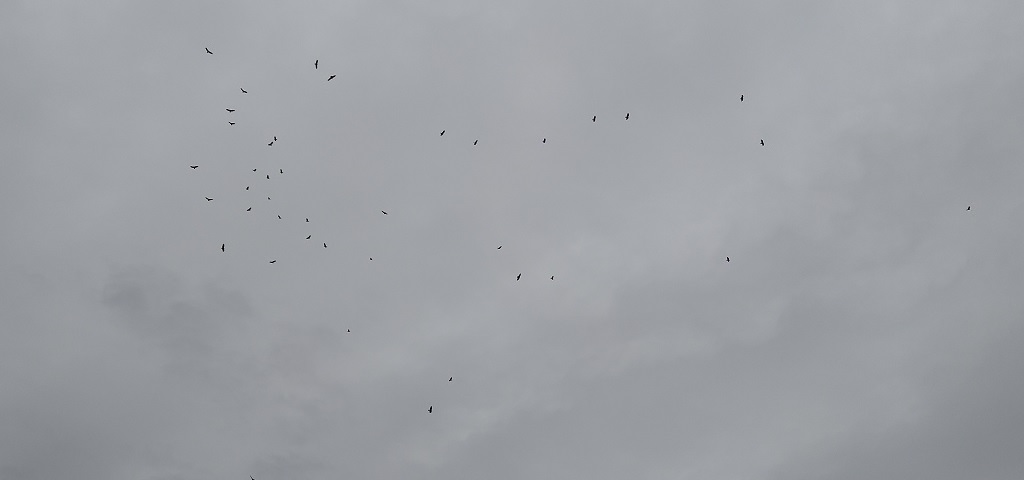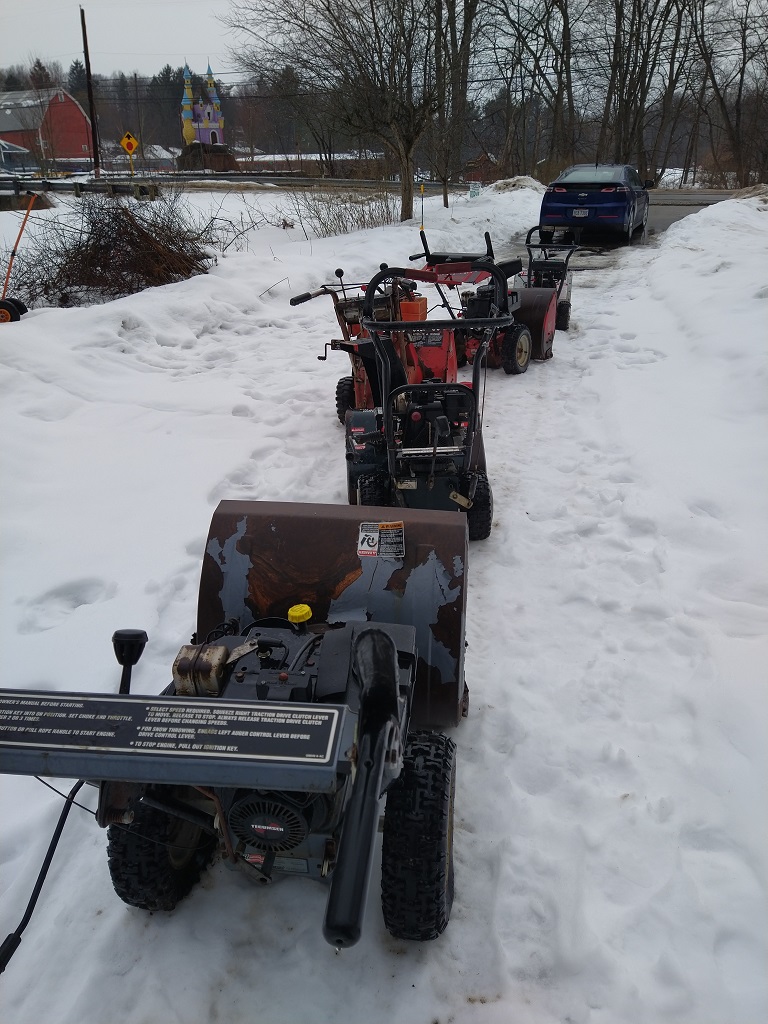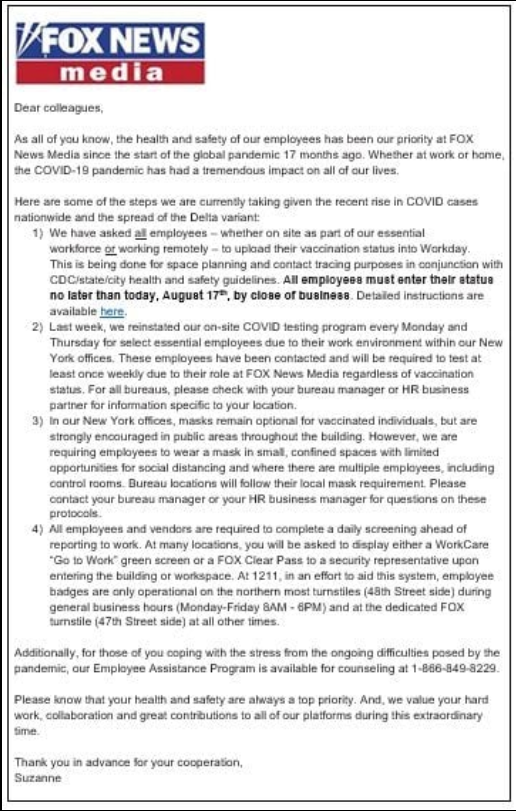Anya and I saw a single buzzard on Sunday, but today was the first time we saw a whole flock circling …
Category: Miscellaneous
The Snowblower Army
First Robins of 2022
I saw the first robins today, but I was not able to get a picture 🙁 A whole flock were perched in the sumac tree along the ridgeline by our chicken coop — I presume pecking through the last seeds still sticking to the tree. They flew away seconds after I registered the colouring and thought “hey, robins!”.
Nothing like a fish
I had an older friend explain why he was absolutely certain his wife and he were going to have a long, happy marriage (they’d been married for a few decades by this point, so he wasn’t speculating). They went on vacation to a small town to get married and honeymoon. Small enough town that the wedding license department and fishing license department (as well as all of the other government functions) were in the same place. Dude wanted to get a fishing license, so he offered to go get both. Shows up and gets his fishing license. Then asks about the wedding license. Government dude says the wedding license dude is on vacation today. Come back tomorrow. My friend asked if government dude could do it. Nope, cannot do it. Friend asked what if his girlfriend looked like a fish, was that close enough? They laughed, and government dude said both people need to be here anyway … so come back tomorrow, and bring her. We’ll get you sorted.
He goes back to their hotel, tells her they both need to be there, and that license dude wont be in the office until tomorrow. The next day, they head back. Dude and his girlfriend walk into the office, and government dude looks at them and says ‘you are wrong, she looks nothing like a fish!”. Future wife says “how about now” and makes her best fish face. They all laugh.
He told me there’s nothing wrong with not wanting your spouse to make fun of your face. And there’s nothing wrong with joking around either. The problem is when the two people aren’t on the same page. They could still make it work, but the jokey partner is going to go through life having to curb their immediate impulse to turn something into a joke. Or the other partner is going through life being humiliated by someone who is supposed to love and support them.
Costco
We’d talked about joining Costco for years — a new store was built not too far from my office, and they had a membership promo. It was rather far away from our house; and, without checking it out first, hard to tell if it was a good deal. Especially without storage space for, say, a gallon of lemon juice. As we’ve been producing more at home — vegetables, meats — we’ve also gotten a lot of storage space. Loads of canning jars, chest freezers, vacuum sealer, shelves. So the idea of buying twenty pounds of apples is now appealing — can a bunch of apple sauce and apple butter 🙂
So, on Friday, we went out to Costco and got a membership. They’ve got a lot of stuff. Unfortunately, we were there about an hour before closing (why in the world would a company have limited hours on the weekend?!) and didn’t get to check out everything. Lots of electronics — a big TV that Scott would have loved to get. A couple of mesh WiFi systems. Fridges (not the one I want to get, unfortunately). And the expected huge containers of foods. Stuff I have a hard time finding in the grocery store too — they never have thick cut pork chops, so I end up getting a whole loin and cutting my own. But there were really nice 1″+ chops sitting right in a cooler. A tasty looking kale pesto. And a huge bag of frozen mango chunks (also a similarly huge bag of blueberries that I hope to not need in a year or two once our bushes start producing!). The coolest thing was that they’re loaded up with organic options (that are generally cheaper than the non-organic variety at the grocery store).
We also learned something about pickup trucks. They are great for hauling home the materials to build a chicken pasture fence. They’re great for hauling chest freezers. They are not great for bringing home groceries … I get why people have those tarp things that pull over the bed. We loaded all of the heavy (and low wind resistance) things into the truck bed, but ended up piling a bunch of lighter / breakable things in the cab with Anya.
Overall, the place seems like a score. And very much in line with my mom’s parents’ approach to living out in the country on a mountain. They’d not plan on going anywhere from October through April — stock up on food, get supplies for any winter projects, and just do their thing for six months. An approach that seems far more reasonable now that I’ve got my own couple hundred foot driveway curving up a mountainside.
On Wealth
People seem to assume the fact you’ve managed to amass money to be a fact that vouches for you … like you cannot be inept / senseless / bad at managing money because, look at that, you’ve got money. Doesn’t matter if you inherited (and subsequently lost much of) a bigger load of money, managed to injure yourself in some stunningly original way that requires some company to fork over millions, tripped over your untied shoelaces and discovered the lost Civil War gold. You have money, so you’re awesome at life.
It makes me think of the towel in the Hitchhiker’s Guide series — encounter someone while you’re wandering and, if they’ve managed to keep track of something so trivial as their towel, then they’ve obviously got it together.
Ten million companys’ immunization and contact tracing processes
Pushing responsibility down as far as possible (local government, companies, individuals) is nice in theory, but we keep running up against the reality that people *aren’t* responsible. And we end up with a menagerie of policies that are, best case, uncoordinated and worst case at odds with each other. Go from town to town, you’ll encounter different restrictions. Go from store to store, you’ll encounter different restrictions. I get wanting freedom — I don’t want someone telling me what colour car I am going to drive or what we’ll be doing to relax Friday night. But I don’t see a difference between “the government taking my freedom” and “the company that I work for taking my freedom”. People like to pretend that it’s my choice to work there, thus not really something being forced upon me. Sure, in theory, you can go find a different workplace (University, elementary school, etc) that doesn’t have the restriction to which you object. The practical reality, though, is different. You need money to support yourself – buy food, pay rent, make sure the heat is on – so you cannot just not work. You may not be able to move halfway across the country to work at your perfect employer. Your perfect employer may not have any openings. Or they may elect to hire someone else. Being financially coerced into ceding my freedom isn’t better than the government enacting a restriction.
And there are just some things that are ineffective without a centrally coordinated policy. And that means that, occasionally, you lose the right to chose for yourself.
Math Time – Delta Edition
An update to my previous mathematical analysis of covid transmission now that I’ve seen R0 estimates for this delta variant …
The R0 value for the delta variant seems to be between 5 and 8. Looks like just over 46% of the US population is vaccinated. The vaccines are published as being 90-something percent effective. That makes an effective transmission rate between (5 * (1- (0.46 * 0.95))) and (8 * (1- (0.46 * 0.9))). Between 2.9 and 4.7 — somewhat surprising given the R0 of slightly under 3 that was published at the start of the SARS-CoV-2 outbreak. That means that, as health orders and mandates are lifted, we’re basically exactly where we were a year ago even though about half the population is vaccinated.
A mathematically interesting thing — if you could get the vaccine efficacy up to 100% (a third shot, a tenth shot, a different vaccine, whatever)? We’d still have an effective transmission rate between 2.7 and 4.3 — the value goes down, but not significantly. On the other hand, increasing the percentage of fully vaccinated individuals by 10% gives us an effective rate of transmission between 2.5 and 4.0. Having 70% of the population vaccinated would yield an effective rate of transmission between 1.8 and 3.0. We’d need to get somewhere between 90 and 98% of the population vaccinated to bring the delta variant’s effective rate down below 1 (the point where it would die out naturally)!
That tells me this virus is going to be around for a long time — especially since the R0 for some upcoming variants might be higher. Also, I’m curious to see if the government authorizes a third dose given the minimal impact increasing efficacy has on the effective rate of spread.
Freedom!!?
About a year ago, my boss observed that this entire pandemic sitch is just a nightmare for those with analytical thought processes.. Engineering, science, analytic types. Mathematically? The country was basically in a worse place when the health orders were lifted than it was when the orders were put in place last year. That was astonishing to me. And kind of like the anti-environmentalists who don’t seem to realize they need to drink the water and breath the air … even if you’re vaccinated and have a very good probability of avoiding hospitalization? Getting sick for a week sucks. It sucked ten years ago, it’ll suck ten years from now. But, if you can mitigate your risk of feeling like an elephant is roosting on your chest for a week … what’s the reasonable thought process that leads to someone saying “I’m going to show how very free I am by getting painfully ill”?!
I mean, there are plenty of ways to partake in your American Freedoms that aren’t painful illness. Head out to the range, rent a gun for a few hours, and fire off a couple dozen 50 caliber rounds. Publish a rant against whatever part of government irked you this week. Spend the weekend attending church services for ten different religions. Hell, marvel at the fact there’s not an uninvited soldier camped out in your spare bedroom and that the cops aren’t rifling through your belongings. And that just covers the first five articles in the bill of rights.
In fact …
| Article | Way to enjoy it |
| I | Spend a weekend attending services for a dozen different churches (synagogs, mosques, etc) |
| II | Hire a gun at a range and spend the afternoon popping off 50-cal rounds |
| III | Marvel at how your spare bedroom is not occupied by an uninvited soldier |
| IV | Notice how the police are not rifling through your personal belongings just because they can |
| V, VI, VII, VIII | Don’t know that I’d commit a crime just to enjoy my right not to provide evidence against myself, be subjected to cruel or unusual pubishment, or experience a speedy, public trial … but you do you. |
| IX | Go to work? |
| X | Oooh, experience all of the things your state does control — maybe hang at the DMV and renew your license |
| XI | Umm … well Michigan hasn’t sued Ohio today. Does that count? |
| XII | Well, you cannot be part of the electoral college … but you CAN vote |
| XII | No more slaves |
| XIV | The state isn’t depriving me of life, liberty and such. |
| XV | My rights aren’t being abridged because of my race |
| XVI | Taxes were withheld from my paycheque this week. Yeah!??? |
| XVII | My state has tw senators |
| XVIII | Grab a pint! |
| XIX | I’m a woman, and I can vote! |
| XX | Watch the certification of the election |
| XXI | Grab another pint! |


